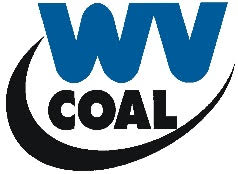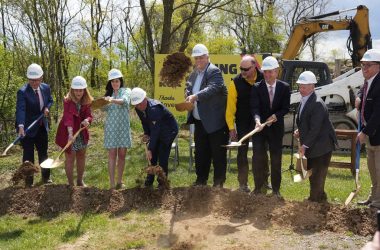By Matt Young, WV Press Association
CHARLESTON, W.Va. – The Select Committee on PEIA, Seniors and Long Term Care, on Sunday, once again heard testimony from PEIA Interim Director and Chief Financial Officer Jason Haught on the first day of July’s Interim Legislative Session.
This marked Haught’s fourth appearance before the committee in as many months. The committee also heard testimony from Jim Kaufman, CEO of the W.Va. Hospital Association, as we as Jody Ratliff from the Office of Emergency Medical Services.
Haught’s testimony consisted of the “financial presentation,” which was originally given before the PEIA Finance Board during their last scheduled meeting.
“There was a $27.7 million drop in revenue (for fiscal year 2022),” Haught began. “The expenses increased from $848,000 to $882,000. As far as fiscal year results – it was originally set at negative $45.1 million. The updated projection is negative $107 million.”
Haught further explained that projections for fiscal year 2023 show an additional revenue decrease of $5.4 million – with an expected expense increase of $14.2 million – resulting in an approximately $20 million “increase in fiscal year results of a net loss.”
“On the historic trends, the COVID pandemic-impact, you can see how it’s much higher than in other years,” Haught continued. “Eventually that low year of COVID will hopefully move out of the trend-analysis, and get back to normal levels.”
Haught then advised the committee that the state’s RHBT (Retiree Health Benefits Trust Fund) had “a rough year,” stating, “thankfully we had a good year last year in the markets to offset this loss. Fortunately for the RHBT those investments are not necessary for many years down the road, so we’ve got plenty of time to recover those losses.”
According to Haught, the RHBT is “currently $11 million behind on investment income through April 2022.”
At the conclusion of Haught’s presentation, Committee Chair Del. Matthew Rohrbach, R-Cabell, said, “These statements are as of April 30. We are now almost at the end of July. Do you have any comments to make about improvements or deterioration in your financial position since this statement?”
“No sir, the expenses have continued to trend higher than budget,” Haught replied. “So we’re looking like we’re going to hit that negative $107 million.”
Jim Kaufman next delivered his presentation on behalf of the W.Va. Hospital Association.
“As you know, the issue with PEIA and reimbursement to providers is not new,” Kaufman said, before thanking the committee for their “previous efforts” to find equitable resolution.
“In 2021, you adopted the moratorium that would prevent further expansion of PEIA, preventing non-state agencies from joining,” Kaufman explained. “But even with that moratorium, there’s more than 650 non-state agencies, representing more than 32,000 beneficiaries that have joined PEIA. Prior to them joining, they were in commercial plans like any other business, where providers were reimbursed differently than the current rates with PEIA.”
Kaufman then applauded the committee for adding two additional Health Care Representatives to the PEIA Finance Board during this past Legislative Session.
“We greatly appreciate that because it allows PEIA to hear – as they are making decisions – what impact it may have on providers,” Kaufman noted, before adding that “Currently, PEIA is paying 50% of the Medicare level” in West Virginia.
“You guys had a bill that ran last session that asked for (a reimbursement) increase of a specific percentage,” Del. Heather Tully, R-Nicholas, noted. “Can you tell me where you came up with that number?”
“The bill that came over to the House from the Senate would have increased reimbursements from PPS (Prospective Payment Systems) hospitals and EMS to 110% of Medicare. PEIA, generally they are paying up to 110% of Medicare rates for certain services. That’s how we came up with that percentage.”
When calculating provider-reimbursement, Kaufman explained, PEIA uses “Medicare methodology,” which typically reimburse between 80% and 90% of “allowable cost.”
Jody Ratliff, Director of Emergency Medical Services, was the last to provide testimony before the committee. His talking points included the “reimbursement rates for EMS.”
“We can’t bill for medication,” Ratliff began. “We can’t bill for intubation. We can’t bill for a cardiac monitor. We can’t bill specifically for anything. What we can bill for is a load fee and a mileage fee, and that’s it.”
Del. Brent Boggs, D-Braxton, expressed some confusion regarding Ratliff’s explanation of the “reimbursement comparison table,” stating, “All of the PEIA rates are higher than the Medicare rates. But on the map, it says we’re below the national Medicare reimbursement. Can you explain that?”
“In other states, their Medicare rate is higher,” Ratliff replied. “Ours is below the national average. If we were in Virginia, our Medicare rate would be higher.”
The next question was posed by Del. Rohrbach, who asked, “So, your contention is that you’re still underpaid because Medicaid and Medicare are paying so poorly?”
“Yes, Sir,” replied Ratliff, “because of Medicare. We’re still below cost for West Virginia.”
At the conclusion of Ratliff’s presentation, the meeting was adjourned. The committee will next hear testimony regarding PEIA during September’s Interim Session.






